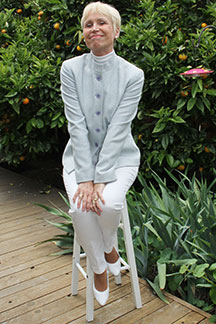In 1439, Johannes Gutenberg, born Johannes Gensfleisch, introduced movable metal type printing to Europe. His printing press became key to moving the world out of the Medieval era and into the Early Modern period. In 1450, Gutenberg tested his invention by printing a Latin book on speech-making. When satisfied with the results, he embarked on printing the now famous Gutenberg Bibles.
Johannes Gutenberg’s printing press set off a printing revolution that boosted literacy by breaking the elite’s monopoly on education. Prior to his invention, the majority of books were written and copied by hand or were printed using carved wooden blocks that were pressed onto paper. Because these processes were labor-intensive, books were very expensive, and only the rich could afford them. Other print machine inventors, mainly from China and Korea, had previously worked on similar apparatuses, but Gutenberg’s printing press had a worldwide impact.
Johannes Gutenberg’s life
The year and place of Johannes Gutenberg’s birth are not precisely known. He is believed to have been born between the years of 1394 and 1404 in Mainz, Germany. Trained as a goldsmith, gem gutter and metallurgist, he started experimenting with printing by 1438. Between 1450 and 1455, he completed his best-known work, the Forty-Two-Line Bibles. Although Gutenberg was unable to financially capitalize on his invention, his printing technology spread quickly across Europe and revolutionized the creation of affordable books.He died in Mainz in 1468.
Martin Luther benefits from Gutenberg’s invention
The Protestant Reformation would not have been possible without the availability of Johann Gutenberg’s printing press. Martin Luther produced over 300,000 pamphlets during his lifetime. His 95 Theses were printed and circulated widely. Certificates of indulgences were among the first items Gutenberg printed.
The Gutenberg Forty-Two-Line Bibles
The Gutenberg Bibles were printed in Latin and considered the first substantial books printed in Europe.The printing process was done entirely by hand. Approximately 175 to 180 copies were printed, and it took between three to five years to complete the entire print run. 175-180 books seem like a small number today, but at the time there were probably no more than 30,000 books in existence in all of Europe.

Gutenberg Bible on exhibit at the Henry E. Huntington Library in San Marino, California. This is one of the 48 surviving Bibles. It is complete and printed on vellum. Photo © J. Elke Ertle, 2018. www.walled-in-berlin.com
Each Gutenberg Bible weighs about 14 lbs. Most of them contain 1,286 pages and were bound in two volumes. Almost no two are exactly alike. The Gutenberg Bible is also known as the Forty-Two Line Bible because the pages are printed with two columns of 42 lines each.
Only 48 copies of the original 175 to 180 have survived, and only twelve Gutenberg Bibles were printed on prepared animal skin, called vellum. It took about 170 calfskins to produce just one Bible from vellum. The remainder were printed on rag cotton paper. The average price for one Bible is believed to have been 30 Florins, which represented three years wages for a clerk at the time.
Gutenberg Bibles still in existence today
Of the original run of 175-180 Bibles, only 48 still exist today in libraries, museum and university collections. Only 6 complete Gutenberg Bibles printed on the more expensive vellum still exist. They are located in Paris, Leipzig, Goettingen, London, Washington, DC, and in the Henry E. Huntington Library in San Marino, California. I was privileged to set eyes on one of them at the Huntington Library.
As an interesting aside, two of the remaining 48 Gutenberg Bibles were taken from Germany by the Red Army at the end of World War II as war booty. They were discovered in the 1980s in Moscow libraries and have not been returned to Germany to this day.
For a sneak peek at the first 20+ pages of my memoir, Walled-In: A West Berlin Girl’s Journey to Freedom, click “Download a free excerpt” on my home page and feel free to follow my blog about anything German: historic and current events, people, places and food.
Walled-In is my story of growing up in Berlin during the Cold War. Juxtaposing the events that engulfed Berlin during the Berlin Blockade, the Berlin Airlift, the Berlin Wall and Kennedy’s Berlin visit with the struggle against my equally insurmountable parental walls, Walled-In is about freedom vs. conformity, conflict vs. harmony, domination vs. submission, loyalty vs. betrayal.



















